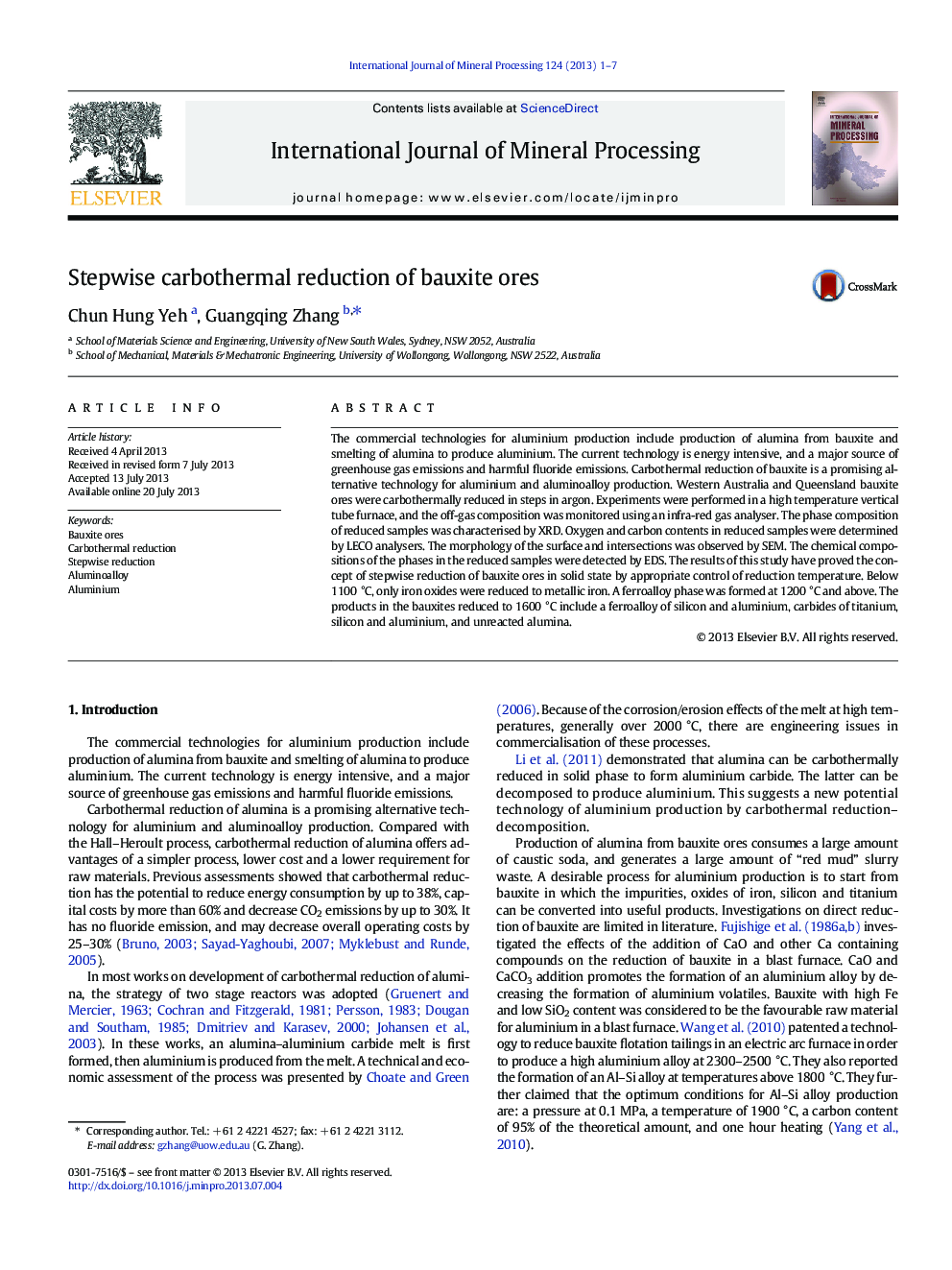| Article ID | Journal | Published Year | Pages | File Type |
|---|---|---|---|---|
| 214043 | International Journal of Mineral Processing | 2013 | 7 Pages |
•Bauxite ores were reduced in temperature programmed and stepwise reduction processes.•Reduction was controlled so that oxides were in solid phase.•The reduction sequence was iron oxides then titania and silica and then alumina.•Iron formed from reduction became a ferroalloy of silicon and aluminium above 1200 °C.•Carbides of titanium, silicon and aluminium were included in the reduction product.
The commercial technologies for aluminium production include production of alumina from bauxite and smelting of alumina to produce aluminium. The current technology is energy intensive, and a major source of greenhouse gas emissions and harmful fluoride emissions. Carbothermal reduction of bauxite is a promising alternative technology for aluminium and aluminoalloy production. Western Australia and Queensland bauxite ores were carbothermally reduced in steps in argon. Experiments were performed in a high temperature vertical tube furnace, and the off-gas composition was monitored using an infra-red gas analyser. The phase composition of reduced samples was characterised by XRD. Oxygen and carbon contents in reduced samples were determined by LECO analysers. The morphology of the surface and intersections was observed by SEM. The chemical compositions of the phases in the reduced samples were detected by EDS. The results of this study have proved the concept of stepwise reduction of bauxite ores in solid state by appropriate control of reduction temperature. Below 1100 °C, only iron oxides were reduced to metallic iron. A ferroalloy phase was formed at 1200 °C and above. The products in the bauxites reduced to 1600 °C include a ferroalloy of silicon and aluminium, carbides of titanium, silicon and aluminium, and unreacted alumina.
